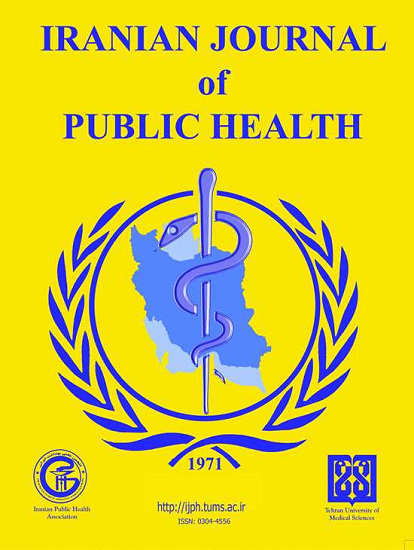Population Forecasting with Alzheimer's Disease in Iran Using a System Dynamic Model
Abstract
Background: The prevalence of Alzheimer's disease in Iran, attributed to the demographic shift towards an aging population, holds considerable importance. We aimed to estimate the prevalence and number of Alzheimer's disease in Iran by 2029.
Methods: Dynamic modeling techniques were employed to project the number of Alzheimer's disease (AD) among the elderly population in Iran by the year 2029. Two interconnected models were developed to facilitate this estimation. The initial model is a demographic model that captures the aging population's growth dynamics. The subsequent model, an AD evaluation model, that assess potential impacts on disease. This approach enables a comprehensive analysis of the factors influencing AD trends within the context of Iran's aging demographic.
Results: The results show the number of individuals aged over 60 is expected to rise from approximately 9.1 million in 2020 to around 13.7 million in 2029. As the older adult population grows, the number of AD is also anticipated to increase. The number of Alzheimer's patients is predicted to grow from about 464,400 in 2020 to roughly 729,900 by 2029.
Conclusion: Forecasting future trends in AD, especially in developing countries, is crucial for policymakers because of its growing impact on healthcare systems and economies globally. The findings of this study can aid in assessing the economic burdens associated with treating Alzheimer's patients, providing valuable insights for planning and resource allocation.
2. Fadaei F, Niknam Z (2007). Alzheimer's disease: yesterday, today, tomorrow. Iran J Ageing, 2(1):158-65.
3. Dotson VM, Beydoun MA, Zonderman AB (2010). Recurrent depressive symptoms and the incidence of dementia and mild cognitive impairment. Neurology,75(1):27-34.
4. Sabayan B, Bonneux L. Dementia in Iran: how soon it becomes late! (2011). Arch Iran Med, 14(4):290-1.
5. World Health Organization (2012). Dementia: a public health priority.; Geneva, pp.:1-102.
6. Prince M, Comas-Herrera A, Knapp M, Guerchet M, Karagiannidou M (2016). World Alzheimer report 2016: improving healthcare for people living with dementia: coverage, quality and costs now and in the future. pp.:1-132.
7. Pejic Bach M, Ceric V (2007). Developing system dynamics models with "step-by-step" approach. JIOS,31(1).
8. Sabounchi NS (2017). A Systems Dynamic Approach to Alzheimer’s Disease Prevention. Int J Popul Data Sci,1(1): 397.
9. Irwin M, Wang Z (2017). Dynamic Systems Modeling. The International Encyclopedia of Communication Research Methods, pp.: 1-12.
10. Meyers RA (2009). Encyclopedia of complexity and systems science: Springer New York.
11. Statistical Centre of Iran (2020). Total death rate- Islamic Rep Iran.
12. World bank (2020). Fertility rate, total (births per woman) - Iran, Islamic Rep.
13. Global Burden of Disease (GBD) (2020). GBD Results of Alzheimer disease for Iran.
14. Miri N, Maddah M, Raghfar H (2019). Aging and economic growth. Iran J Ageing, 13(5):626-37.
15. Mirzaie M, Darabi S(2017). Population aging in Iran and rising health care costs. Iran J Ageing, 12(2):156-69.
16. Mehri N, Messkoub M, Kunkel S (2020). Trends, determinants and the implications of population aging in Iran. Iran J Ageing, 45(4):327-43.
17. Tomaskova H, Kuhnova J, Cimler R, Dolezal O, Kuca K (2016). Prediction of population with Alzheimer’s disease in the European Union using a system dynamics model. Neuropsychiatr Dis Treat,12:1589-98.
18. Akushevich I, Yashkin A, Kovtun M, Kravchenko J, Arbeev K, Yashin A (2023). Forecasting prevalence and mortality of Alzheimer's disease using the partitioning models. J Experimental Gerontology, 174:112133.
19. Nichols E, Steinmetz JD, Vollset SE, et al (2022). Estimation of the global prevalence of dementia in 2019 and forecasted prevalence in 2050: an analysis for the Global Burden of Disease Study 2019. Lancet Public Health, 7(2):e105-e25.
20. Manuel DG, Garner R, Finès P, et al (2016). Alzheimer’s and other dementias in Canada, 2011 to 2031: a microsimulation Population Health Modeling (POHEM) study of projected prevalence, health burden, health services, and caregiving use. Popul Health Metr, 14:37.
| Files | ||
| Issue | Vol 54 No 5 (2025) | |
| Section | Original Article(s) | |
| DOI | https://doi.org/10.18502/ijph.v54i5.18641 | |
| Keywords | ||
| Alzheimer's disease (AD) Aging population Older adults | ||
| Rights and permissions | |

|
This work is licensed under a Creative Commons Attribution-NonCommercial 4.0 International License. |





